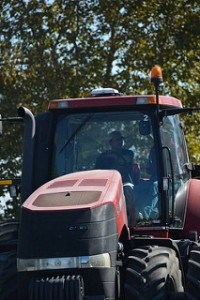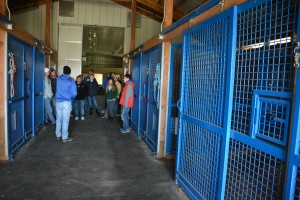The Trans-pacific Partnership is a new trade agreement among certain countries supporting more Made in America exports, eliminating numerous taxes and tariffs. Benefits from an agricultural standpoint include eliminating import taxes as high as 40% on U.S. poultry products, 35% on soybeans, and 40% on fruit exports. Two out of those three categories listed are huge economic factors withing the state of Delaware and would greatly effect economy. TPP also eliminates tariffs from countries like japan, Vietnam, etc and gets rid of those high taxes placed on american products such as beef, pork, poultry, dairy, and soybeans. Other factors such as wine will also have tax burdens lifted upon exportation to foreign countries. Non beneficial factors of this agreement are as followed, free trade agreement contributes to income inequality in high wage countries by promoting cheaper good from low wage countries, the agreement regarding patents will reduce the availability of cheap generics making many drugs more expensive, and competitive business pressures will reduce the incentives in Asia to protect the environment.
All posts by emyoung
The Horse Racing Industry in Delaware
In this presentation, Mark Davis discussed the horse racing industry and all it encompasses. I thought this to be a very an amusing topic to learn and discuss about seeing as I had little to no knowledge of it beforehand. There were many interesting facts throughout the entire presentation, pertaining to the horse racing industry for Delaware as well as then nation. We learned that the pari-mutuel wagering system in which people bet money on a specific outcome and all of the wagered money is placed into a pool to be divided amongst the winners was developed by a French man name Pierre Oller in the late 19th Century. More interesting is that the horse racing industry today has a direct economic a effect on the U.S. of $39 billion annually! I also enjoyed learning the difference of harness racing which uses a pull system compared to that of thoroughbred racing which uses a rider system. It was astonishing to hear how much money is generated in our economy through horse racing.
An Overview in the Livestock Industry in DE
Dan Severson came to our class and shared a presentation reviewing statistics of Delaware farming today. In these slides we learned that approximately 96% of farms owned today are family owned and represent 87% of all agricultural value generated. As we progressed into the livestock portion of the presentation Dan quickly stated that since 1950 food production in the U.S. is 260% times better, he also noted that WWI caused many younger farmers to choose different careers. From there we discussed the average annual per capita consumption of meat. Beef being the number one consume meat in the U.S. and poultry standing as the number one consumed meat in Delaware. We also learned that here in the U.S. we have some the most affordable food costs in the World! Not to mention the safest and most abundant of food sources as well. Dan also reviewed the different livestock in Delaware and how each are individually used. We learned that hogs are not very popular in Delaware as they once were. Sheep are used for mostly show and genetics. Goat for their meat and that the amount of diary farms in Delaware has decreased but the number of dairy cows remains consistent. I especially enjoyed learning about the different species of animals used in Delaware and how they are most allocated throughout the state.
Hoobers Field trip
On our third trip we took a slightly less distanced trip to the precision agriculture store known as Hoobers. Hoober’s employees being well versed in the installation of yield monitors as they stated them to be their most popular piece of precision agricultural equipment. After being given a brief tour of their facility and discussing the different types of equipment and machinery used, we were split into two separate groups. One group would briefly learn about the many uses of drones in agriculture today while the other group would get the opportunity to steer a tractor themselves. To my discovery upon driving a tractor for the first time, i was amazed at how great of a turn radius tractors have. Driving one of those vehicles of machinery for the first time will be an experience i will never forget. learning about the many uses of drones today was also very interesting as drones give a new aerial perspective for the agricultural world today like no other.

Delaware’s Green Industry
Delaware’s Green Industry was presented by Tracy Wooten and Valann Gudischak. We learned what and who is part of the green industry, with that being producers, retailers, landscapers, land managers, golf courses, and suppliers of equipment. Probably one o the most important lessons learned was the difference between floriculture crops and nursery crops. Floriculture crops being those bedding/garden plants, cut cultivated greens, flowers, potted flowering plants, foliage plants, and propagative floriculture material. Nursery crops being those of broadleaf and coniferous evergreens, deciduous shade trees and flowering trees, deciduous shrubs and other ornamentals, fruit and nut plants for home use, cut and to-be-cut Christmas trees, and propagation material or lining out stock. Grower sales of nursery crops accruing to approximately $8 billion annually and floriculture crops at approximately $4.8 billion. Learning about this part of agriculture was interesting as you do not hear about it often and the many job and career opportunities lie within the green industry.
Fifers Orchards Field trip
Our second field trip was held at fifers Orchards. We were given the opportunity of a thorough tore throughout the farm at the orchard, were they grew both fruits and vegetables. It was surprising that pumpkins were among those crops that bring in the greatest income as well as sweet corn. I was very impressed with Fifers’ social media out reaches as they used multiple social media sites such as Facebook and Twitter to try and reach out to more potential customers. We got to see firsthand in the assembly lines of apples, where they were boxed by a certain grading standard and those seen unfit to consumption standards are sent to be used for juice or to be disposed of. What I found most interesting was all the different types of apples that they grew at Fifers throughout the seasons. Honey crisp being my favorite of all others grown.

Agriculture in the News
This article talks about how on Wednesday September 14, 2016 it was announced that Bayer a chemical company best know for its pharmaceuticals such as aleve and asprin would be buying out Monsanto to cause one of the biggest agricultural mergers ever seen. The buy out was valued at approximately $66 billion and has caused much uncertainty to some of the public as this is yet another huge merger of agricultural and chemical businesses. This deal marks as the biggest German takeover yet of an American firm.
UD Farm Field Trip
Our fourth and final field trip consisted of a short trip the the various farms run by the University of Delaware. Scott Hopkins who has worked at the University for many years was our guide for the day. Our first stop was at Webb farm where we stopped and visited the Equine building, which was currently empty as we learned the horses spend most of their time during the day grazing rather than being in their pens. I found it interesting how female horses can control child birth so freely and how the horse has progressively moved towards the title of companion along those of cats and dogs. After, we breifly visited the sheep and lambs as they mostly ate and chose to ignore our presence. After the visit to Webb farm we made our way over to UD’s dairy farm. Here we learned how dairy cows are trained to eat out of certain feed bins specifically for them. At the the end of the trip we were treated with ice cream from our very own UD creamery.

